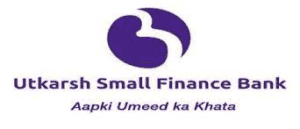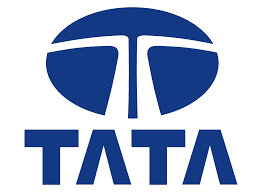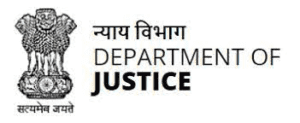Captioning FAQs
Do you have any questions about our captioning services? Common FAQs & answers for captioning will clear all your doubts. So, wait no more and go through Captioning FAQs to clearly understand about the solutions.
Call to ask any question +91-8527599201
FAQs & Answers For Captioning
Frequently Asked Questions on Captioning
Q1. What are captions?
Answer: Captions are sound and text descriptions displayed in a video that is synchronised with the media as well as available to be read while viewing the video. While creating captions it should be assumed that the video’s viewers are unable to hear the audio, so it’s crucial to provide captions that match the spoken word and applicable sound effects.
Q2. What are open captions?
Answer: Open captions are sound and text descriptions given in a video to introduce speakers, specify key sounds, and show the spoken word in a written format. Open captions burned into the video and stay visible to everyone, and even can’t turn them off. They synchronise the text information with the time and the audio played in the video.
Q3. What are closed captions?
Answer: Closed captioning or CC, is a technique to display text as well as sound descriptions on a video. The term ‘closed’ refers to the text hidden as a different track in the video until it is turned on. In this, the text does not get burnt into the video. Closed captioning enables the viewer to either switch the captions on or off, which might be suitable for a video watched online like YouTube.
Q4. How captions are different from subtitles?
Answer: Subtitles refer to the translation of a spoken word in the video to another language in a written format. Whereas captions are divided into two forms i.e. closed captions and open captions. Captions provide a spoken word into a written alternative. They also introduce speakers as well as describe relevant noises as they exist in the audio.
Q5. Why captioning video is a great alternative?
Answer: One of the most important reasons for availing of caption services is the legal regulations for video and television on-demand services. This is to ensure that all the viewers get access to information, including the hard of hearing and deaf. Whether you are producing videos, ads, blogs, or other audio-visual content, closed captioning is paramount.
Q6. Do you provide closed captions in various styles?
Answer: At Tridindia, our closed captions services have the option for styling which includes changes to colour, text size, and font. Styling also involves the option of onscreen text animation options such as pop-on or roll-up closed captions. You can tell your preferences and requirements to Tridindia experts, and we’ll do our best to meet your needs.
Q7. What are the different closed captions formats for broadcast or web?
Answer: For online videos, closed caption formats used are .vtt, .srt or .ssa. These formats are very simple in nature with negligible styling alternatives available. When it comes to broadcast, the highly common format is SSL that allows excellent flexibility when it comes to caption formatting, animation, placement, and style.
Q8. Who would want captioning?
Answer: Although captioning is meant for everyone. Especially, hard-of-hearing and deaf people use captioning to know what is being said in any video such as business meetings, webinars, public events, etc. Using captioning as a way to give access to communication maximizes every year and will keep on growing as several people learn to know it as means of access.
Q9. Can you make my closed captions ready for web/broadcast use?
Answer: Our captioners are capable of working on your closed caption files without using any software and change them into the format you want. As mentioned above, we provide our captions in a plethora of formats for projects shown on various web, broadcast, and television channels.
Q10. Is closed captioning process tough?
Answer: At Tridindia, our captioners not merely work to change spoken word into text but also stick to production house styles as well as involve additional audio descriptions in their work. Text timings have to be synced with the given video, and it should be accurate to 1/100 seconds. Guidelines can differ from one client to client so great care as well as attention is required in this process.
Q11. Can you caption my YouTube, Facebook, or Vimeo videos?
Answer: Well, we won’t directly add the captions into your video, but we can transcribe the video for you with suitable timings as well as sound descriptions and make an.SRT file with such information. Better still, we can add captions to your video so you can only upload the open version for the viewers to see.
Q12. Why does captions quality matter?
Answer: When captions do not match with what is being said in the video, it can be very frustrating for the viewer especially deaf or hard of hearing. As captions are meant to be the ideal alternative to video for people with hearing loss, our captioner ensures that they should be readable, 99% accurate, contain speaker labels, and do not hinder essential content in the video.
Q13. How much time is required to get a video or clip captioned?
Answer:
For extremely short videos i.e. 10 minutes or less, we will require a week turnaround. For lengthy videos, we require two weeks. We can, at the time, get videos done in quite less time, but we can’t assure it. Preplanning can work wonders in ensuring accessibility.
Q14. What is the cost of captioning?
Answer:
Well, we know budget matters to you. Captioning believes in offering a high-quality product at an affordable price. The cost is totally based on the kind of event, the technique of display, whether the event is onsite or remote. Contact us now to request a quote!
Q15. Why should I outsource captioning to Tridindia?
Answer:
We know the usefulness of captioning in the digital world. It can help businesses gain more audience by making their videos accessible to any type of audience in their native language. It can also boost the SEO of the brand’s website. All these can be possible if captions are rich in nature. Outsourcing caption to Tridindia will give you quality, accurate, ready-to-use and creative captions.
Case Studies
We are dedicated to
serve you all time
Testimonial
It’s always a joy to hear that the work we do, has positively reviews.
A big clientele and a database of positive testimonials encourage us to work harder to meet and extend our client’s expectations.
Quick, qualified, and responsible. Their artist’s beautiful narration suits our film effectively which we are proudly showing to our audience. Now Tridindia, you are on the top of our voice-over service list. It was a pleasure working with you.
Artha Singhal
Video Editing Specialists
Voice overs from you guys have given me such relaxation as there is nothing that needs to be corrected. You are true professionals and a pleasure to work with. You have brought a level of quality to my productions that is worth its weight in gold.
Driss Kelsey
Video Editor
You did a great job. The voice-over artist was extremely flexible and satisfied my needs. They managed everything very professionally, we didn’t have to explain them about the needs again and again. Totally recommend them for all the video makers.
Emmanuel Hansen
Studios Head
I have had a great time collaborating with Tridindia on many media productions and their team is not only blessed with fabulous and engaging voice but combines that a truly professional approach. I always look forward to work with them again and again.
David Grech
Editor
First cut of the dubbing was on point, we didn’t have to send the file again and again for revisions! Definitely hiring you again for our future projects. We have a really smooth process that decreased our hustle.
Ambar Agarwal
Short Filmmaker
Our business includes many interviews on technical topics. It’s hard to get the facts correct, so we rely on Tridindia. The accurate accounts of our conversation, delivered within a quick time period, have been very useful for us.
Antonio D Souza
Executive Assistant
The quality of the transcripts provided by you was of top-notch and the timeliness of the work was fabulous. I have suggested your services to many fellow researchers who many need transcribing services.
Dev Pathak
Researcher
Well-experienced and a pleasure to work with you guys. Top-notch recording and very fast turnaround time. What more could one can ask for? As per my recommendations and needs, they have done a satisfactory work. No complaints! Completely satisfied! 🙂
Darsh Laghari
Creative Director







































